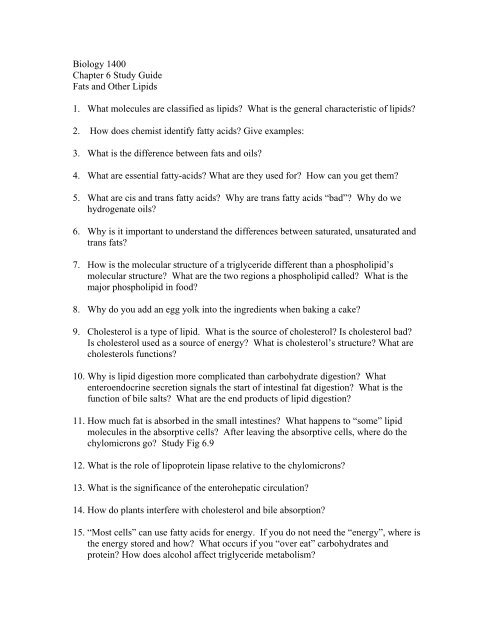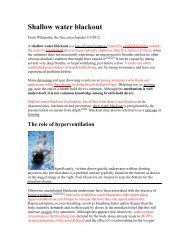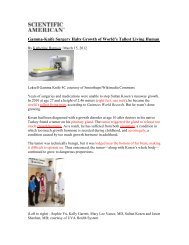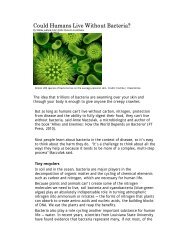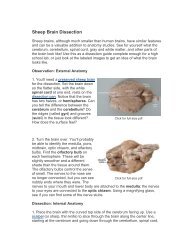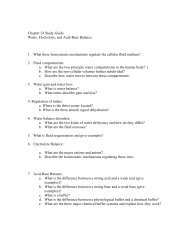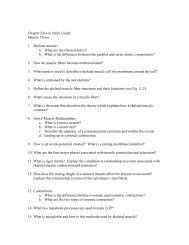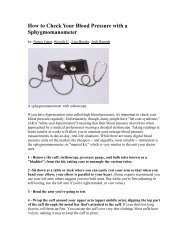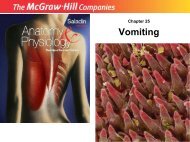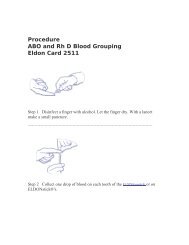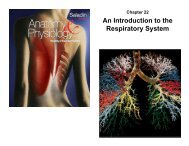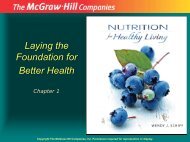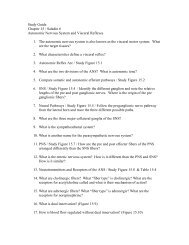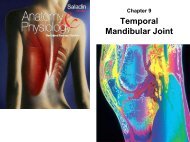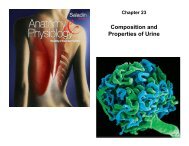Biology 1400 Chapter 6 Study Guide Fats and Other Lipids 1. What ...
Biology 1400 Chapter 6 Study Guide Fats and Other Lipids 1. What ...
Biology 1400 Chapter 6 Study Guide Fats and Other Lipids 1. What ...
- No tags were found...
Create successful ePaper yourself
Turn your PDF publications into a flip-book with our unique Google optimized e-Paper software.
<strong>Biology</strong> <strong>1400</strong><br />
<strong>Chapter</strong> 6 <strong>Study</strong> <strong>Guide</strong><br />
<strong>Fats</strong> <strong>and</strong> <strong>Other</strong> <strong>Lipids</strong><br />
<strong>1.</strong> <strong>What</strong> molecules are classified as lipids? <strong>What</strong> is the general characteristic of lipids?<br />
2. How does chemist identify fatty acids? Give examples:<br />
3. <strong>What</strong> is the difference between fats <strong>and</strong> oils?<br />
4. <strong>What</strong> are essential fatty-acids? <strong>What</strong> are they used for? How can you get them?<br />
5. <strong>What</strong> are cis <strong>and</strong> trans fatty acids? Why are trans fatty acids “bad”? Why do we<br />
hydrogenate oils?<br />
6. Why is it important to underst<strong>and</strong> the differences between saturated, unsaturated <strong>and</strong><br />
trans fats?<br />
7. How is the molecular structure of a triglyceride different than a phospholipid’s<br />
molecular structure? <strong>What</strong> are the two regions a phospholipid called? <strong>What</strong> is the<br />
major phospholipid in food?<br />
8. Why do you add an egg yolk into the ingredients when baking a cake?<br />
9. Cholesterol is a type of lipid. <strong>What</strong> is the source of cholesterol? Is cholesterol bad?<br />
Is cholesterol used as a source of energy? <strong>What</strong> is cholesterol’s structure? <strong>What</strong> are<br />
cholesterols functions?<br />
10. Why is lipid digestion more complicated than carbohydrate digestion? <strong>What</strong><br />
enteroendocrine secretion signals the start of intestinal fat digestion? <strong>What</strong> is the<br />
function of bile salts? <strong>What</strong> are the end products of lipid digestion?<br />
1<strong>1.</strong> How much fat is absorbed in the small intestines? <strong>What</strong> happens to “some” lipid<br />
molecules in the absorptive cells? After leaving the absorptive cells, where do the<br />
chylomicrons go? <strong>Study</strong> Fig 6.9<br />
12. <strong>What</strong> is the role of lipoprotein lipase relative to the chylomicrons?<br />
13. <strong>What</strong> is the significance of the enterohepatic circulation?<br />
14. How do plants interfere with cholesterol <strong>and</strong> bile absorption?<br />
15. “Most cells” can use fatty acids for energy. If you do not need the “energy”, where is<br />
the energy stored <strong>and</strong> how? <strong>What</strong> occurs if you “over eat” carbohydrates <strong>and</strong><br />
protein? How does alcohol affect triglyceride metabolism?
16. <strong>What</strong> diseases are described by cardiovascular disease (CVD)?<br />
17. Using the correct terms, explain the mechanism that causes atherosclerosis:<br />
18. <strong>What</strong> are non-modifiable <strong>and</strong> modifiable risk factors for CVD?<br />
19. <strong>What</strong> is good <strong>and</strong> bad lipoprotein? <strong>What</strong> is the function of these lipoproteins? <strong>Study</strong><br />
Fig 6.19<br />
20. <strong>What</strong> is the value of knowing your “lipid profile”?<br />
2<strong>1.</strong> Where is high-sensitivity C-reactive protein (CRP) produced <strong>and</strong> what is CRP an<br />
indicator for?<br />
22. <strong>What</strong> do high levels of saturated fat affect the membranes of liver’s cell? How do<br />
high levels of trans fat affect LDL <strong>and</strong> HDL?<br />
23. How can you reduce your blood concentration of total cholesterol <strong>and</strong> LDL?<br />
24. <strong>What</strong> is better for you, omega-3 or omega-6 fatty acids?<br />
25. Some people have CVD without elevated lipid levels. <strong>What</strong> is a “genetic” cause?<br />
26. Should you avoid eggs?<br />
27. Butter contains cholesterol <strong>and</strong> saturated fatty acids. Should you avoid butter <strong>and</strong> use<br />
margarine?<br />
28. <strong>What</strong> are fat replaces?<br />
29. Test Bonus Points: Drink to Your Health!


